Experience the Magnificent Romance of History and Nature City of Nakagawa
Tour places that constitute the “Western Capital” and tell of its history throughout the eras, such as the manmade waterway Sakuta no Unade, thought to have been dug 1300 years ago, as well as ruins from the Kofun Period and a high ground tied to Emperor Antoku during the Heian Period.
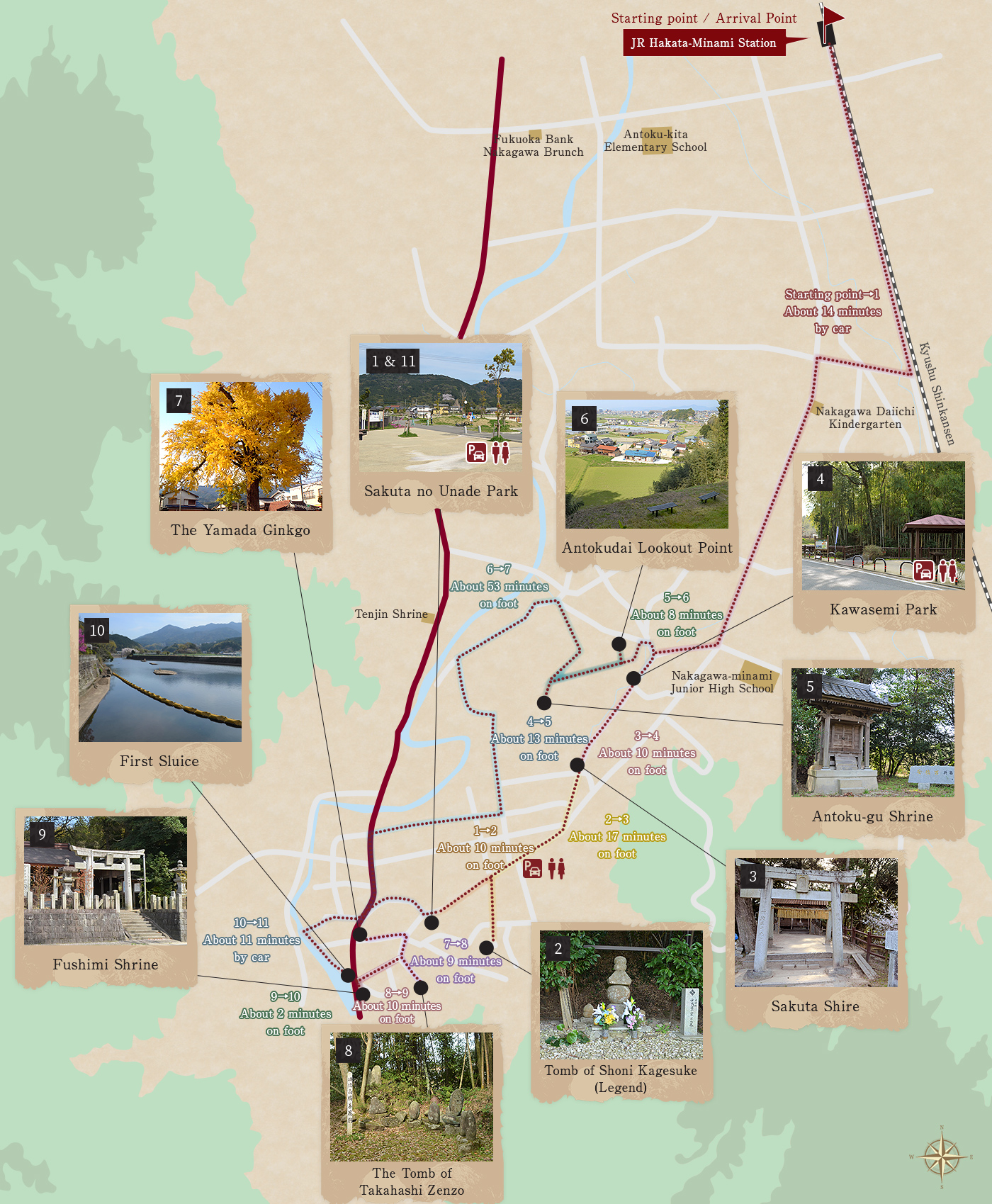
From JR Hakata Station
・8 minutes to Hakata-Minami Station on the JR Hakata Line
 Parking
Parking
 Restrooms
Restrooms
Depart from JR Hakata-Minami Station
About 14 minutes by car
Rest at Pristine Waters of One of the Top 100 Canals in Japan Sakuta no Unade Park
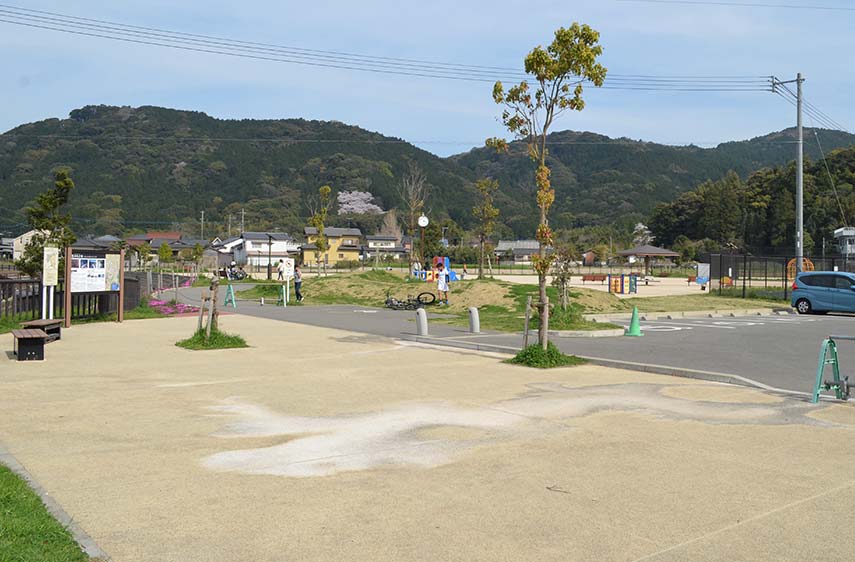
Sakuta no Unade is an important historic site that is still active as an irrigation canal while still preserving the historical landscapes of its legendary creation. It also contains precious ecosystems, including such rare species as the rosy bitterling. Parks and walkways have been established at some areas of the waterway, letting you feel the ancientness of this place as you stroll along.



About 10 minutes on foot
Where the Commander Against Mongolian Forces Lays to Rest Tomb of Shoni Kagesuke (Legend)
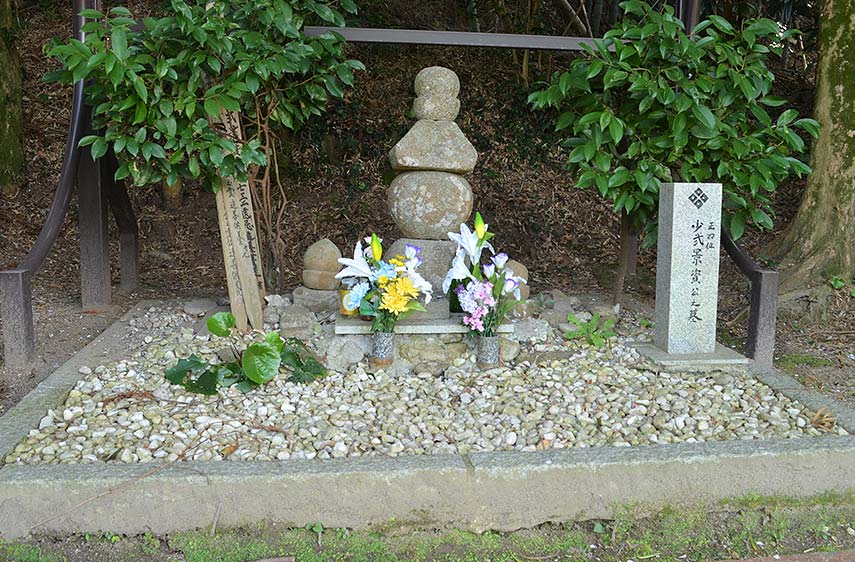
This five-story pagoda is said to be the tomb of Shoni Kagesuke, a military commander during the Kamakura Era who had a fortress at Shiroyama (Iwato Fortress). Kagesuke served as general of the Kyushu Army during the Mongolian Invasion, and his bravery is described in handscrolls entitled Illustrated Account of the Mongol Invasion.

About 17 minutes on foot
There are restrooms and parking midway along the Sakuta no Unade waterway.
Worshipping Empress Jingu, Builder of Sakuta no Unade Waterway Sakuta Shire
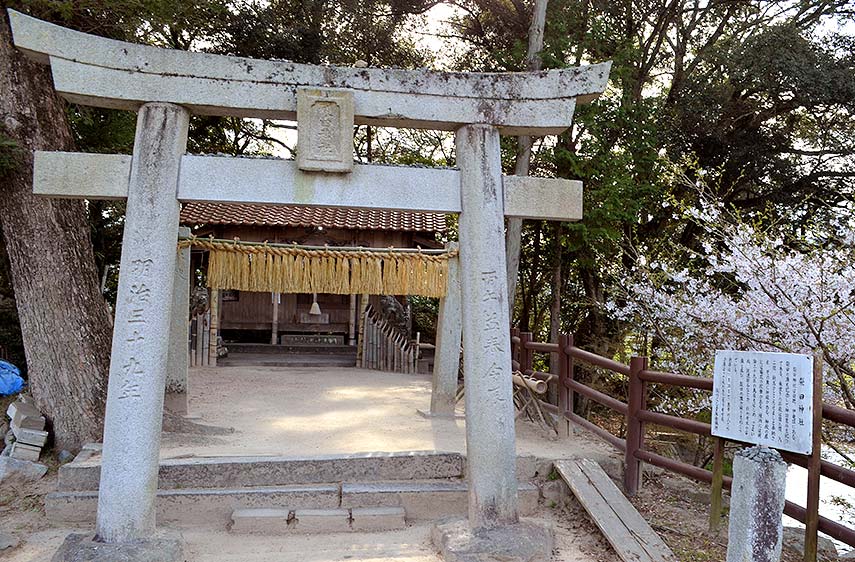
In the Nihon Shoki is a legend in which the Empress Jingu, while trying to dig a ditch to irrigate a rice paddy created as an offering to the gods, was blocked by a boulder, but then after having a prayer made using sacred treasures, lightning struck the boulder, splitting it in two and allowing her to pass.

About 10 minutes on foot
With the Awe-Inspiring Sakuta no Unade Waterway Running Through the Plateau Kawasemi Park
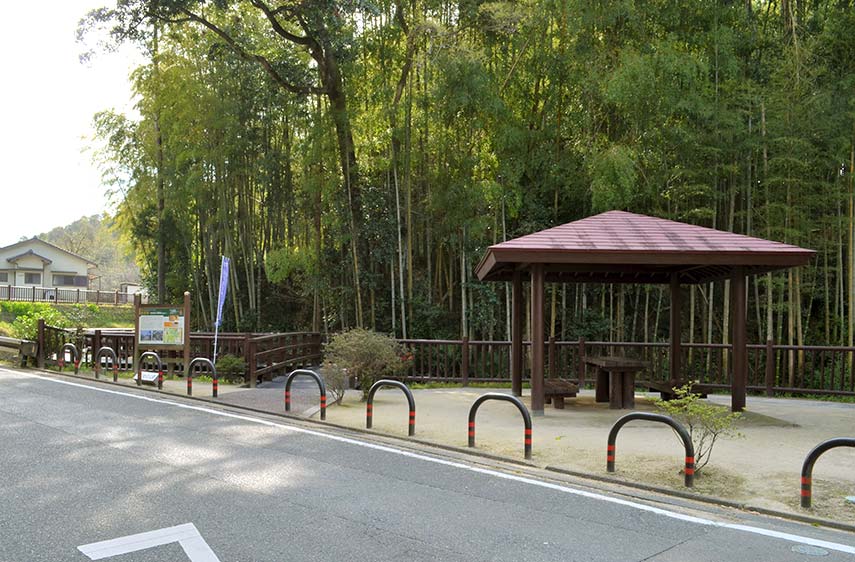
From the wooden deck, take in views of Sakuta no Unade winding through a plateau created from the eruption of Mount Aso. You can tell the scale of this enormous civil engineering project just by looking at it.



About 13 minutes on foot
A Shrine to Mourn a Tragic Prince Antoku-gu Shrine
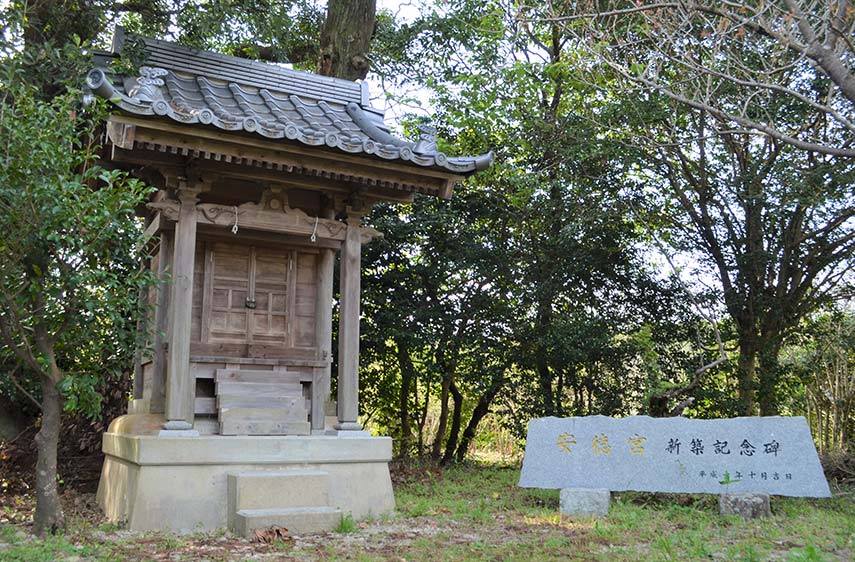
Antokudai, a 10,000 square meter plateau created from the pyroclastic flow from Mount Aso’s eruption roughly 90,000 years ago, gets its name from the fact that it once welcomed Emperor Antoku, who was chased by the Minamoto Clan. There are many legends about Emperor Antoku in the area, and it is said that Antoku-gu Shrine was built in memory of this emperor, who drowned himself at Dannoura.

About 8 minutes on foot
Overlooking Rice Paddies Irrigated by Sakuta no Unade Waterway Antokudai Lookout Point
This lookout point, offering sprawling views of the rice paddies irrigated by Sakuta no Unade Waterway, was built a few years prior by local residents and volunteers. Here, you can reflect on how this area once served as a granary that supported the development of the “Western Capital”.
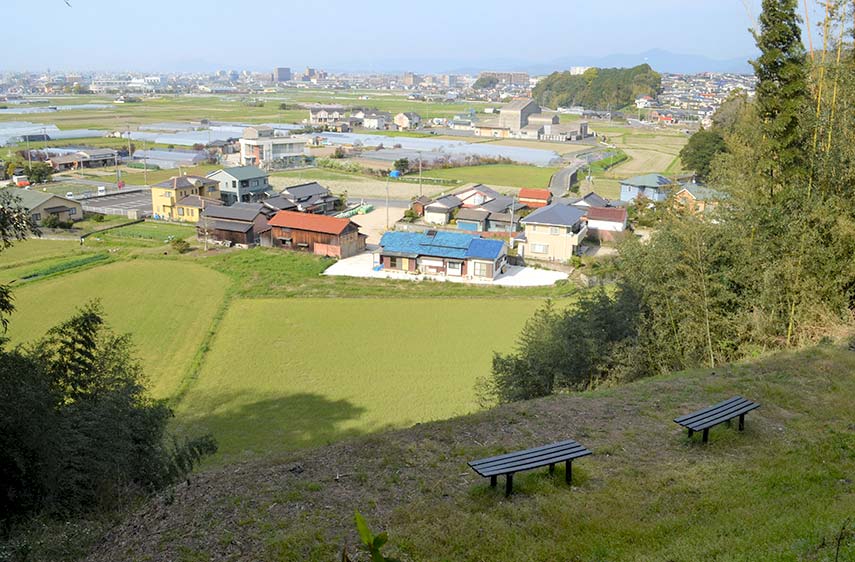

About 53 minutes on foot
A Local Symbol The Yamada Ginkgo
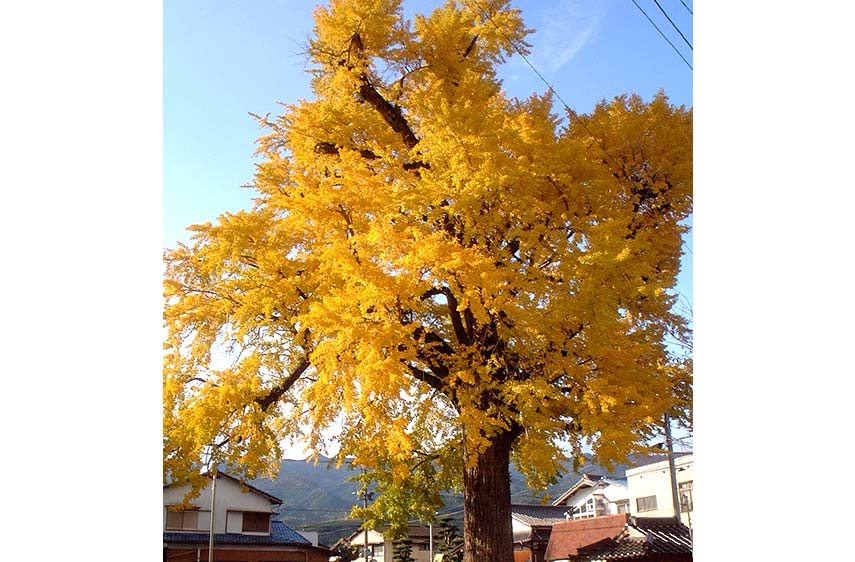
An ancient female tree roughly 26 meters in height and 5.3 meters in circumference, this is the largest ginkgo tree in town and has been designated a natural monument by the city. Ginkgo leaves are used in the ward logo and is loved by many, with its leaves lit up during the autumn season.

About 9 minutes on foot
A Great Agricultural Scientest Who Saved His People The Tomb of Takahashi Zenzo
Takahashi Zenzo was an agricultural scientist during the Edo period who studied how to cultivate and use the wax tree, the raw material for candles, to help stabilize the lives of villagers suffering from famine. The results were compiled in a book entitled, “A Pearl Shining in the Night of a Starving People”, which was used as a textbook for cultivating wax trees until the Showa era. A wax tree was planted at his tomb at his dying wish.


About 10 minutes on foot
Where a Catfish Messenger of the Gods is Honored Fushimi Shrine
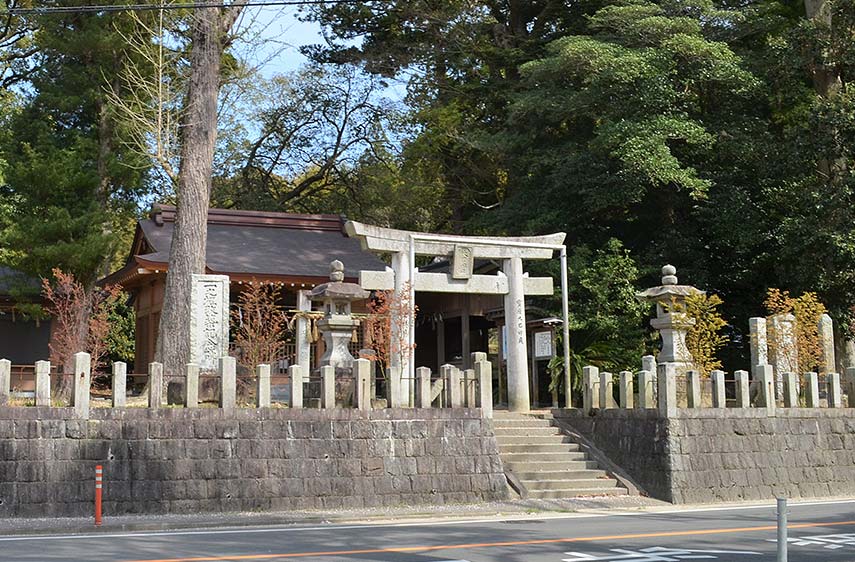
The name apparently originates from the fact that Kawakami Daimyojin (today's Yodohime Shrine) in Saga was enshrined together with Goko Shrine in Fushimi. The catfish said to have protected Empress Jingu is revered here as a messenger to the gods, with votive pictures of catfish dedicated to the shrine. The shrine is also known for its "Iwato Kagura Court Music," performances, designated by the prefecture as an intangible folk cultural asset.

About 2 minutes on foot
For Water Brought to the Area First Sluice
A sluice for sending water from Naka River to Sakuta no Unade, which was about 150 meters long. Chikuzen-no-Kuni Zokufudoki (“Description of the Land of Chikuzen”) states that it was the largest sluice in the nation during the Edo Period. Though renovated around 1985 and no longer visible today, remnants can still be seen here and there when the water level drops.
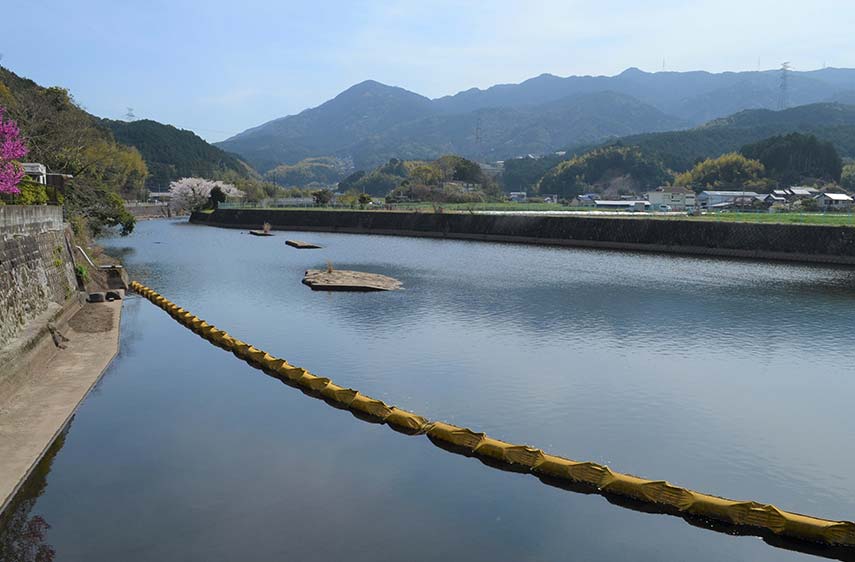

About 11 minutes by car
Sakuta no Unade Park
About 10 minutes by car
JR Hakata Station

